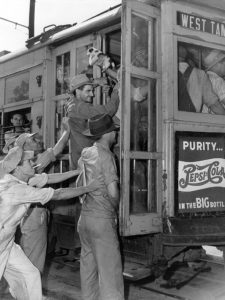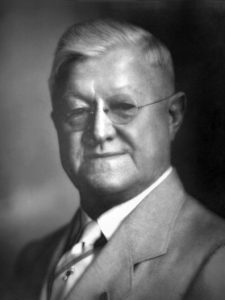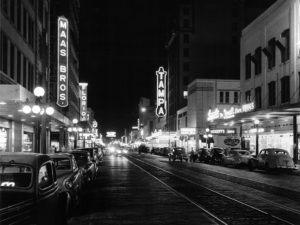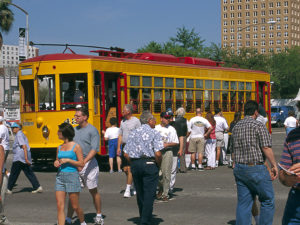TECO is proud to be part of Fourth Friday in downtown Tampa! Read previous Fourth Friday blog posts here and here.

Set the way-back machine to the 1920s and you’ll find a magnificent, 53-mile streetcar network crisscrossing Tampa, connecting millions of people annually to their jobs, entertainment and life along the city’s arteries.
Set the right-now machine to today – May 26, 2017 – and you can ride the replica descendants of those streetcars for free with a trip through downtown and Ybor City, feeling history’s electric-powered vibrations at your feet. And maybe get a glimpse of the future at the same time.
Free rides on the streetcar today (see standard fares here) are a special offer available to all Fourth Friday participants wearing the complimentary wristbands distributed by participating arts and cultural venues. Tampa’s monthly Fourth Friday celebrations are great opportunities to enjoy local music and food at a variety of venues and get special deals on admission to museums and more as you mingle with your neighbors.
And, of course, be sure to experience the streetcar if you haven’t done so lately! Although it’s called the TECO Line Streetcar and overseen by the Hillsborough Area Regional Transit Authority (HART), we’re proud to see our name on it…and even prouder to see people like you enjoying it.
How Tampa Electric’s streetcars put a city’s growth on track

Consider these words from 1927 by Peter O. Knight, a visionary Tampa leader, co-founder of Tampa Electric and the utility’s third president:
“Now the city has as magnificent a street railway and electric light system as any city in the United States. With a five-cent fare and universal transfer throughout the city, which no other city in this country has.”
Knight – also one of the organizers of the company that became Peoples Gas – was referring to a streetcar system he played a major role in starting. In 1892, Knight co-founded the Tampa Suburban Railway Company. The company’s streetcars were innovative at the time, relying on electricity to run. This set them distinctly apart from those with wood-burning furnaces that comprised Tampa’s first generation of streetcars beginning in 1885 with the Tampa Street Railway Company.
A court injunction, however, threatened to keep Suburban’s streetcars off tracks claimed by the Tampa Street Railway Company. In response, Knight and partners established Consumers Electric Light & Street Railway Company. In 1899, after its purchase by Boston-based Stone & Webster, Consumers officially became Tampa Electric Company, with Knight as vice president.

Tampa Electric started with 21 miles of streetcar track that blanketed the growing city, from West Tampa to Ballast Point in South Tampa, through downtown and northeast to Ybor City. With its 1913 purchase of the Tampa & Sulphur Springs Traction Company, the utility operated a unified transit system with nearly 50 miles of track.
As Tampa’s economy boomed in the 1920s, so did the city’s streetcar ridership, which peaked at nearly 24 million passengers in 1926 on a 53-mile network. From the 1920s through 1946, railways served as the community’s primary means of public transportation, with the yellow Birney streetcars running from before dawn until 2 a.m., all week long.
While the 1930s saw fewer streetcar passengers as gasoline-powered cars and buses became more common, World War II-related rationing boosted ridership again. Tampa Electric proclaimed its streetcar system saved 213,000 gallons of gas during the war.

Tampa’s first streetcar era, and the daily operation of 168 streetcars, ended as postwar America embraced the family car and moved to the suburbs in large numbers. But the memory of those bright yellow streetcars lives on. In 2002, the TECO Line Streetcar began service. Today, a new generation of streetcars rumble and clang from Ybor City to downtown Tampa, carrying with them Knight’s legacy and recalling an important part of Tampa’s, and Tampa Electric’s, past.
And maybe its future too, including tonight, when those vintage-looking doors open to invite you aboard.


No Comments Found